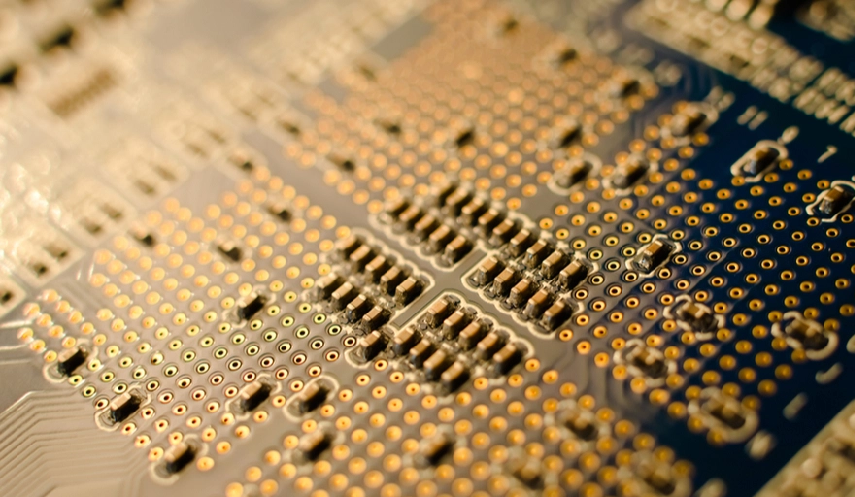In the ever-evolving realm of Very Large Scale Integration (VLSI), two prominent design approaches have emerged: Application-Specific Integrated Circuits (ASICs) and Field-Programmable Gate Arrays (FPGAs). In this respect, these two methods have lead to the emergence of a new logic of developing and employing the complex digital systems that meet the needs of many applications. The hardware design process is getting more and more demanding for businesses, so, it is important to know the main differences between ASIC and FPGA designs in order to make the right choice that will fully address the needs of each project.
There is no universally applicable solution in the case of ASIC and FPGA designs; instead, it is necessary to have a complex knowledge of the peculiarities of the given project, limitations and long-term goals. ASICs are superior to other types of chips in terms of performance and power efficiency for specific applications; at the same time, FPGAs are flexible, they make rapid prototyping possible and they are adaptable to changing needs. Finding the right combination of these factors is key to cost reduction, accelerating the time-to-market and ensuring the system works well.
ASICs: Customized for Specifications
Customized Circuits
ASICs are ICs which are fabricated for a definite reason or use. They are designed from scratch, and tailored to fit the specific purpose, which in turn ensures the best performance, the lowest power consumption, and the most cost effective. ASICs are built from scratch with the precision of every component and circuit, as such the design is optimized to achieve the sole objective, without having to include any elements that could potentially be a cause of inefficiency.
High Performance, Low Power Consumption
Two of the crucial points in favor of ASICs are their capacity to provide outstanding performance and power efficiency. Through the design that is adaptive to the application, ASICs are able to exploit the use of dedicated hardware resources and optimized architectures, which in turn lead to faster processing speeds and lower power consumption when compared to generic solutions.
Long Development Cycle and High Non-Recurring Costs
Nevertheless, the emergence of ASICs is marked by a long and difficult process such as design, verification, and fabrication. This long lead time usually results in the higher non-recurring engineering (NRE) costs that might be a concerning factor in low-volume or customized applications.
FPGAs: Flexibity and Reconfigurability are Solutions.
Programmable Logic Blocks
Owing to their uniqueness FPGAs are the semiconductor devices with the programmable logic blocks that are interconnected with the programmable interconnects. Such logic blocks can be programmed to implement many digital circuits and functions, therefore making FPGAs highly adaptable and versatile for the purpose of many applications.
Rapid Prototyping and Reconfigurability
One of the main merits of FPGAs which allows for quick prototyping and reconfigurability is their ability to do it. In contrast to ASICs that demand a new physical fabrication process for every design change, FPGAs can be reprogrammed to perform different functions or to embed design modifications without physical adjustments. This agility is a significant contributor to reducing development time and cost, especially when there are iterations or the need is for adjusting to changing requirements.
Reduction Non-Recurring Costs and Shorter Time-to-Market
FPGAs are more flexible than ASICs in terms of NRE costs since they do not have the same custom fabrication level requirements. This can be an advantage where the production volume is not high or where the time-to-market is the critical factor for the product.
Hardware Services Design Consideration
Application Requirements
While choosing between embedded system hardware design service or PCB design, the application needs to be thoroughly checked. There are variables like performance constraints, power limitations, production quantities, and flexibility requirements that have to be catered for.
Performance and Power Efficiency
In regard to apps that demand for higher speed and power consumption, ASICs might be the preferable option. Yet, if the design requirements are highly variable or the production volumes are small in scale, FPGAs can be the more economical and versatile option for deployment.
Development Time and Cost
ASIC and FPGA designs are a matter of development cycles and related costs. ASICs are considered the best option for high volume production due to their longer development cycles and higher NRE costs, whereas FPGAs is the most preferred for the fast time-to-market and lower upfront costs, enabling them to be the most suitable for rapid prototyping and lower-volume applications.
Scalability and Upgradability
For others, the scalability or upgradeability of the design would be the main factor in their decision. FPGAs offer higher flexibility and they can be reconfigured or updated without a new fabrication process to be involved. It is good for those applications that need to do frequent updates and/or developing new features.
Combination Approaches and Design Improvements
ASIC Prototyping with FPGAs
In some cases, a hybrid technique may be applied, where FPGAs are used for initial prototyping and debugging followed by designing an ASIC for high-volume manufacturing. Fast prototyping and design iterations are possible using FPGAs. However, the mass production of ASICs remains the most economical solution.
Design Optimization and Verification
Whether it is the implementation of the hardware or the design approach, optimization and verification must be carried through and through to guarantee the robustness and reliability of the design. Well-skilled hardware design services should use standard software tools and techniques for design entry, simulation, synthesis and verification, to guarantee the final product meets the desired specifications and performance requirements.
Conclusion
The need for the advancement of specialized hardware solutions is increasing the moment and it is imperative to know the main differences and considerations between ASIC and FPGA designs. ASICs are the best suitable for the applications that require unrivalled performance and power efficiency, while FPGAs are great for rapid prototyping, flexibility, and reconfigurability. The decision between these two methods may be due to the fact that the application requirements, performance demands, power constraints, production volumes, and flexibility needs are some of the factors that determine the method to use.
The embedded design company who want to get the proper hardware design services should pay attention to their target project goals and cooperate closely with experienced embedded design firms or pcb design board experts. Through the use of their tremendous knowledge base, companies can make sound judgments, refine their designs, and thus create superior, customer-driven designs that answer the changing needs of the VLSI sector.


















+ There are no comments
Add yours